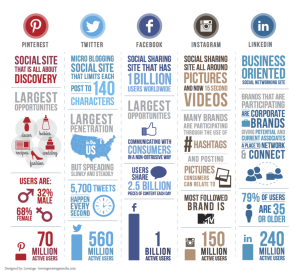What Execs Need to Know About Marketing, Channel Partners
Channel marketing is misunderstood. The average executive can visualize what a day on the job looks like for a salesperson, a software developer or a human resource professional, but far fewer agree on what it means to be a channel marketer. While it’s not necessary for every executive to graduate from Channel Marketing U, there’s significant opportunity for those who can educate themselves on the core principles and applications of this burgeoning specialty discipline.
Though casually labeled as “local marketing,” “partner marketing,” “affiliate marketing,” among other things, channel marketing is a growing specialization focused on communicating value to, with, through and for channel partners. Those partners are typically companies outside of your organization, that sell, service or refer your products. There are four pillars of channel marketing that any executive, at any experience level, and in any industry, can use to create successful partnerships and productive results:
To-Partner Marketing
Organizations very commonly forget or neglect the fact that partners are also customers, driven by their own needs and desires. The universal rule of To-Partner Marketing is that channel partners are motivated by their economic interests, but that’s just one piece of the puzzle. Effective programs analyze a partner’s business profile (geography, industry specialization, and company size), their performance (number of deals and dollar value of deals), and their potential (focus, growth plans and resources).
With-Partner Marketing
When you’re shoulder-to-shoulder with a partner, at a seminar or trade show with a shared booth or selling to the end-user with side-by-side logos, you’re practicing With-Partner Marketing. Effective scaling is key, and if a company has hundreds of partners, it may not be practical or possible to engage in initiatives with all of them. Consistent criteria are required, taking into account which partners are best served by a joint initiative, which partners will be most participatory and which are willing to commit substantial marketing budgets.
Through-Partner Marketing
Through-Partner Marketing is giving your partners the ability to succeed with your content in their way and in their world. The major obstacle to this strategy is perception of risk. Many organizations miss this opportunity entirely because they’re uncomfortable letting go of unilateral control over their messages and content. By supplying content, giving permission to use it creatively, and setting some reasonable standards for its implementation, organizations can maintain quality control while benefitting from the full opportunity of the channel.
For-Partner Marketing
Most organizations are engaged in some kind of For-Partner Marketing. Effective, proactive For-Partner Marketing means creating smart, sustained campaigns to drive demand and generate leads for your partners. The draw of this strategy is that partners can put focus on closing deals, not generating leads. It leverages an organization’s brand awareness and expertise in communicating value, while playing to a partner’s strength in convert leads to sales.
Choosing the Right Path
Every organization is different and must rely on its own blend of these strategies to effectively leverage the channel. The key to success, in all cases, is helping your partner so they can help you. By communicating value based on their objectives, arming them with the tools and resources they need and creating strategic roles that fit the relationship, both businesses will discover new opportunities for growth and success.
(24)








